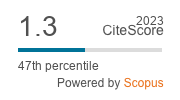Recent Labour Market Trends in the Visegrad Group Countries
DOI:
https://doi.org/10.2478/v10103-011-0009-zAbstract
This study analyses labour market trends that appeared in Poland and other Visegrad Group countries during the global economic crisis, i.e. between 2007 and 2009. Special attention is paid to the changes in employment and unemployment rates that occurred in that period. For the sake of comparison, the labour market indicators are contrasted with average rates for the European Union and the euro area. The presented analysis aims to identify the degree to which unemployment rates and indicators of employment changed in the selected countries in response to the global crisis and to explain why the labour markets in the sample countries reacted differently. It also addresses the changing production volumes and labour market flexibility, particularly towards wages, employment and working time. The above analyses show that the labour markets of the Visegrad Group countries changed significantly during the global economic crisis, i.e. between 2007 and 2009; unemployment rates rose, while volumes and rates of employment decreased. In Poland, the two indicators changed their values relatively insignificantly, but in Hungary, Slovakia and the Czech Republic the changes were quite distinct. In the crisis years, Polish employment fell and unemployment increased to a relatively small degree. Although the main reason for this was the quite favourable growth trend in the Polish GDP, cuts in real wage and working time reductions also played a role. The relatively marked decline in the Hungarian employment is maliny attributed to the strong downward trend in the country’s GDP, but the decline would have probably been much more extensive, if not for the reductions in working time, real wages and labour productivity. The large declines in the Slovak and Czech employment appeared because the countries' GDPs grew smaller while real wages grew bigger. Shorter working hours and limitations on labour productivity that the two countries introduced could not reverse the unfavourable employment trends that occurred during economic downturn.
Downloads
References
Bassanini A., Nunziata L., Venn D. (2009), Job Protection Legislation and Productivity Growth in OECD Countries, ‘Economic Policy’, No. 58, pp. 349-402
Google Scholar
Bosworth D., Dawkins P., Stromback T. (1996), The Economics of the Labour Market, Longman, Essex
Google Scholar
Cahuc P., Zylberberg A. (2004), Labour Economics, The MIT Press, Cambridge-London
Google Scholar
Kwiatkowski E. (2006), Bezrobocie. Podstawy teoretyczne, Wydawnictwo Naukowe PWN, Warszawa
Google Scholar
Smith S. (2003), Labour Economics, Routledge, London-New York
Google Scholar
Eurostat website
Google Scholar
OECD website
Google Scholar
Strzelecki P.,Wyszyński R., Szczuk K. (2009), Zjawisko chomikowania pracy w polskich przedsiębiorstwach po okresie transformacji, ‘Bank i Kredyt’, Narodowy Bank Polski, Warszawa, 40(6), pp. 77-104
Google Scholar
Wojtyna A. (2010), Gospodarki wschodzące w obliczu kryzysu finansowego: duża odporność czy podatność?, ‘Gospodarka Narodowa’, Warszawa, 9/2010, pp. 25-45
Google Scholar
Downloads
Published
How to Cite
Issue
Section
License

This work is licensed under a Creative Commons Attribution-NonCommercial-NoDerivatives 4.0 International License.










